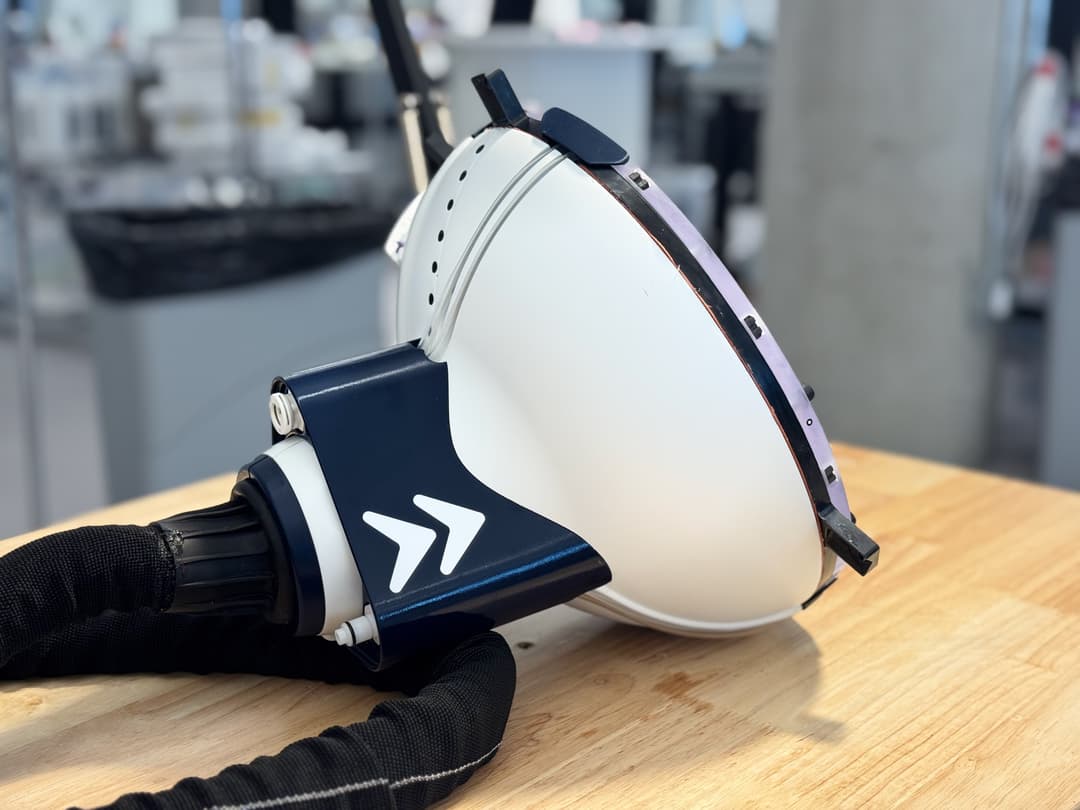Open Material Mode Empowers the Development of Cutting-Edge Materials for Medical Devices
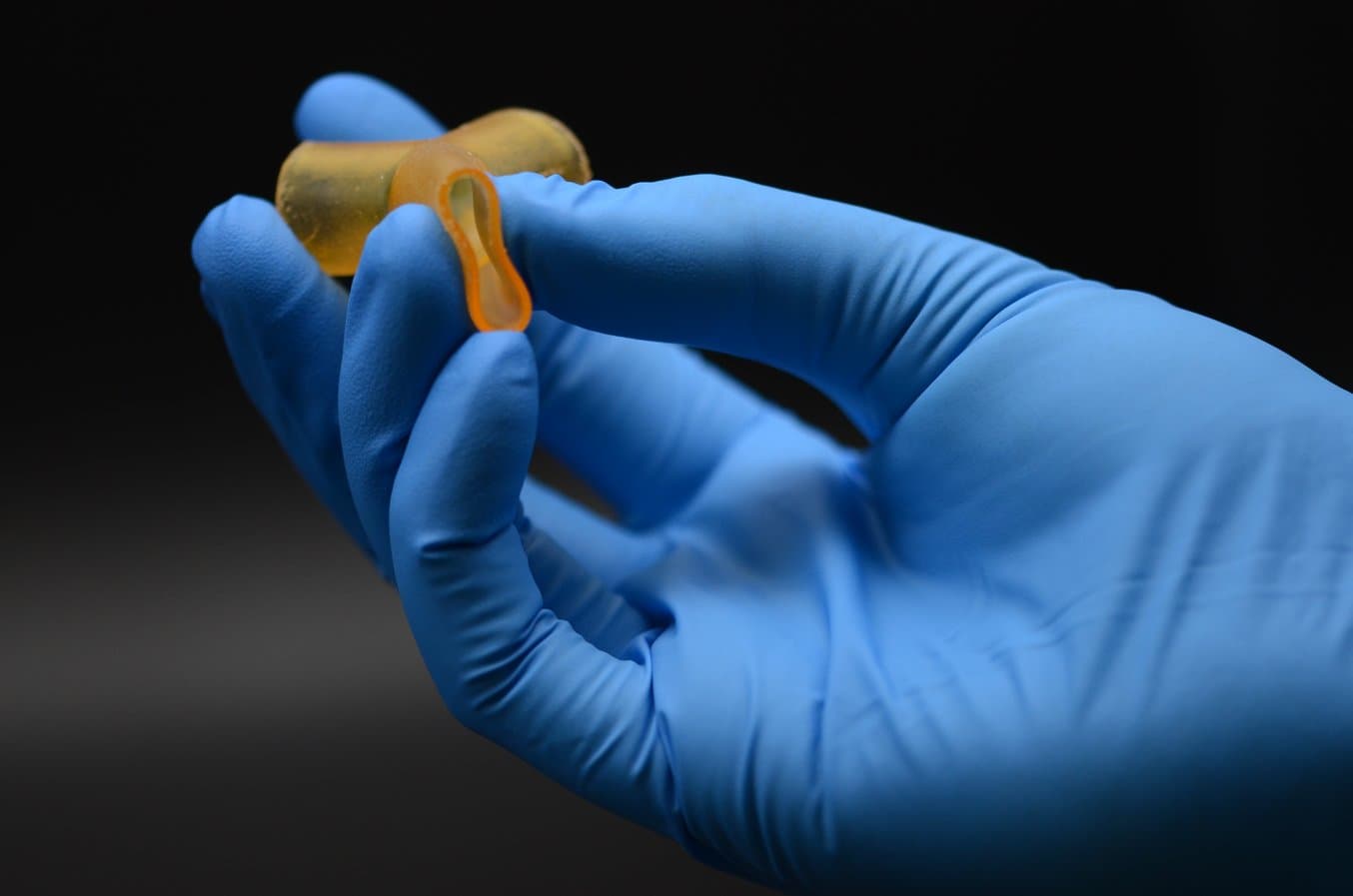
Technological advances empower researchers to push their research further, iterate faster, and even develop potentially life-saving devices that weren’t previously possible.
Open Material Mode (OMM) for Form 3 and Form 4 Series 3D printers empowers expert users and researchers to push the boundaries of 3D printing by allowing them to print with any third-party 405 nm photopolymer resin or develop their own custom resins.
For medical device companies Poly-Med and restor3d, OMM enables the development of custom resins for 3D printing medical devices. At Poly-Med, OMM plus the advanced heating capabilities of Form Series Printers propels the development of bioresorbable resins. For restor3d, OMM saves valuable time for machine operation technicians, who can leverage the hardware and settings of Form 4B, plus Formlabs PreForm software, to print customized resins.
With the speed, accuracy, and heating capabilities of Form Series Printers, expert users and researchers can now leverage OMM to unlock unprecedented possibilities for material innovation and advanced applications.
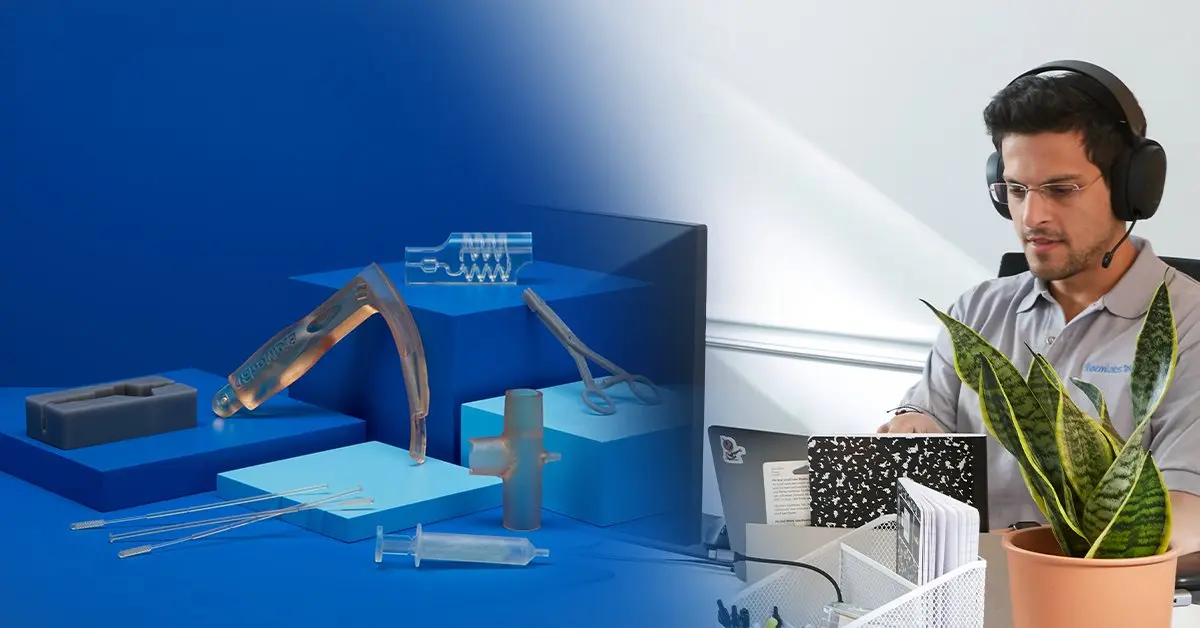
Talk to Our Medical Sales Team
Whether you need to make patient-matched surgical tools or are prototyping for a cardiac medical device, we’re here to help. Formlabs Medical team are dedicated specialists who know exactly how to support you and your company's needs.
Open Material Mode Empowers the Development of Resorbable Materials at Poly-Med
Poly-Med focuses on creating resorbable medical devices that can be implanted in the body and then degrade over time. They started with resorbable thermoplastics before moving to 3D printing. Aaron Vaughn, Manager of Material Science and Technology at Poly-Med, notes that when Poly-Med began the project of developing resorbables for 3D printing six years ago, there weren’t any resorbable materials for SLA 3D printing on the market because the technology available in 3D printers couldn’t support the development of such materials.
“On the material side, not having open source options was a big hurdle.”
Aaron Vaughn, Manager of Material Science and Technology, Poly-Med
Before Formlabs, Poly-Med was using the one professional, open-source resin printer they were aware of. Vaughn says, "The printer that we were using prior to the Form 3 had critical limitations that constrained the material design."
Vaughn says that with photopolymer 3D printers, “one of the big limitations in printers early on was being able to heat the resin.” With Formlabs Form Series 3D printers, Poly-Med found printers with the heating capacity necessary for their research and development, but they needed an open ecosystem in order to leverage this capacity.
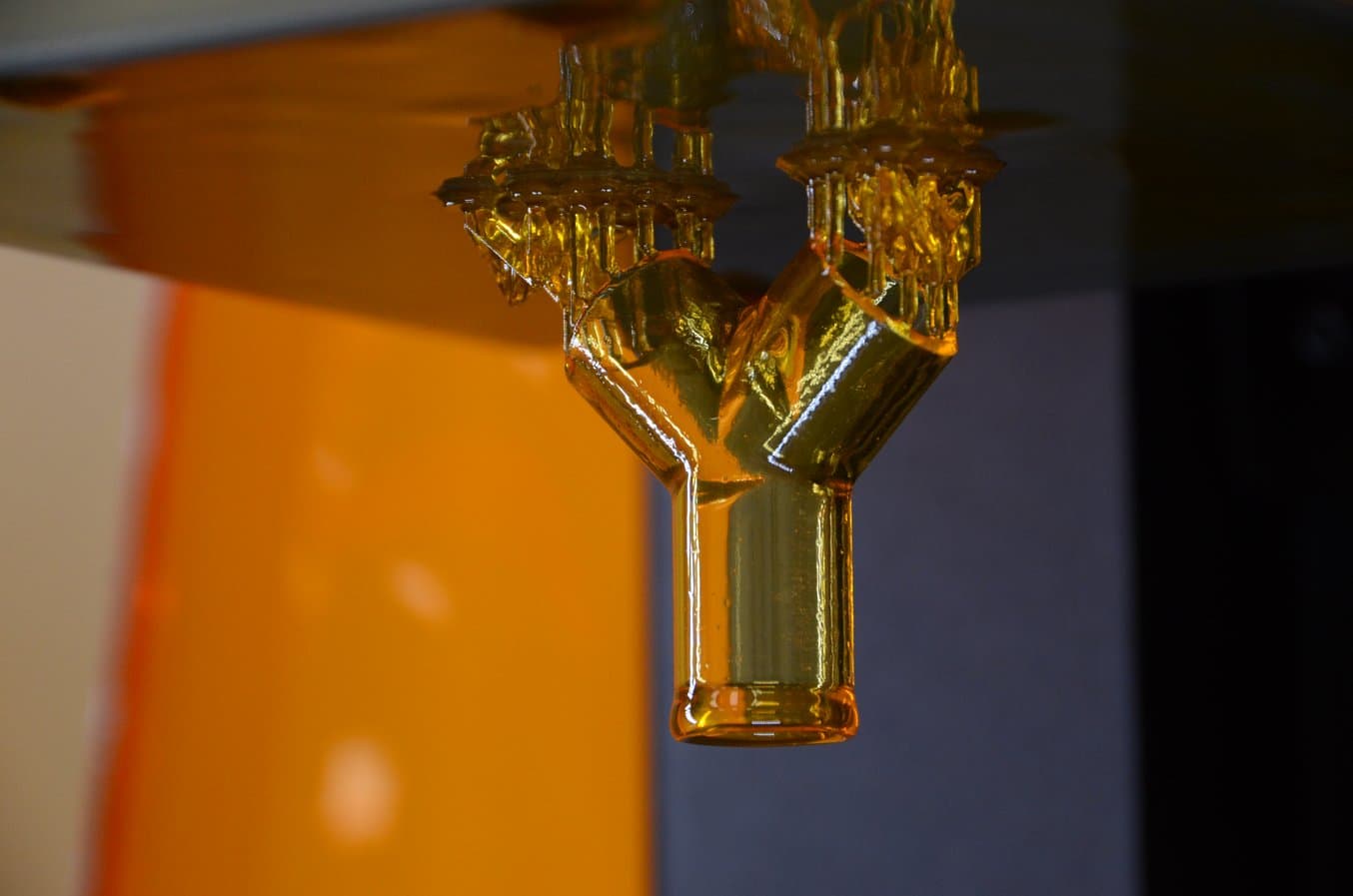
Poly-Med prints custom, bioresorbable materials on Form Series SLA 3D printers.
With the release of OMM on Form Series printers, Poly-Med is able to leverage the Formlabs ecosystem to develop resins for SLA 3D printed devices for tissue support, tissue regeneration, and scaffolds for void filling.
“We started off with FDM and we got a lot of requests for that, but a lot of people want finer resolution. Being able to have the resorbable material with the finer resolution of SLA, it's not cost prohibitive and it’s where we really see the market going.”
Aaron Vaughn, Manager of Material Science and Technology, Poly-Med
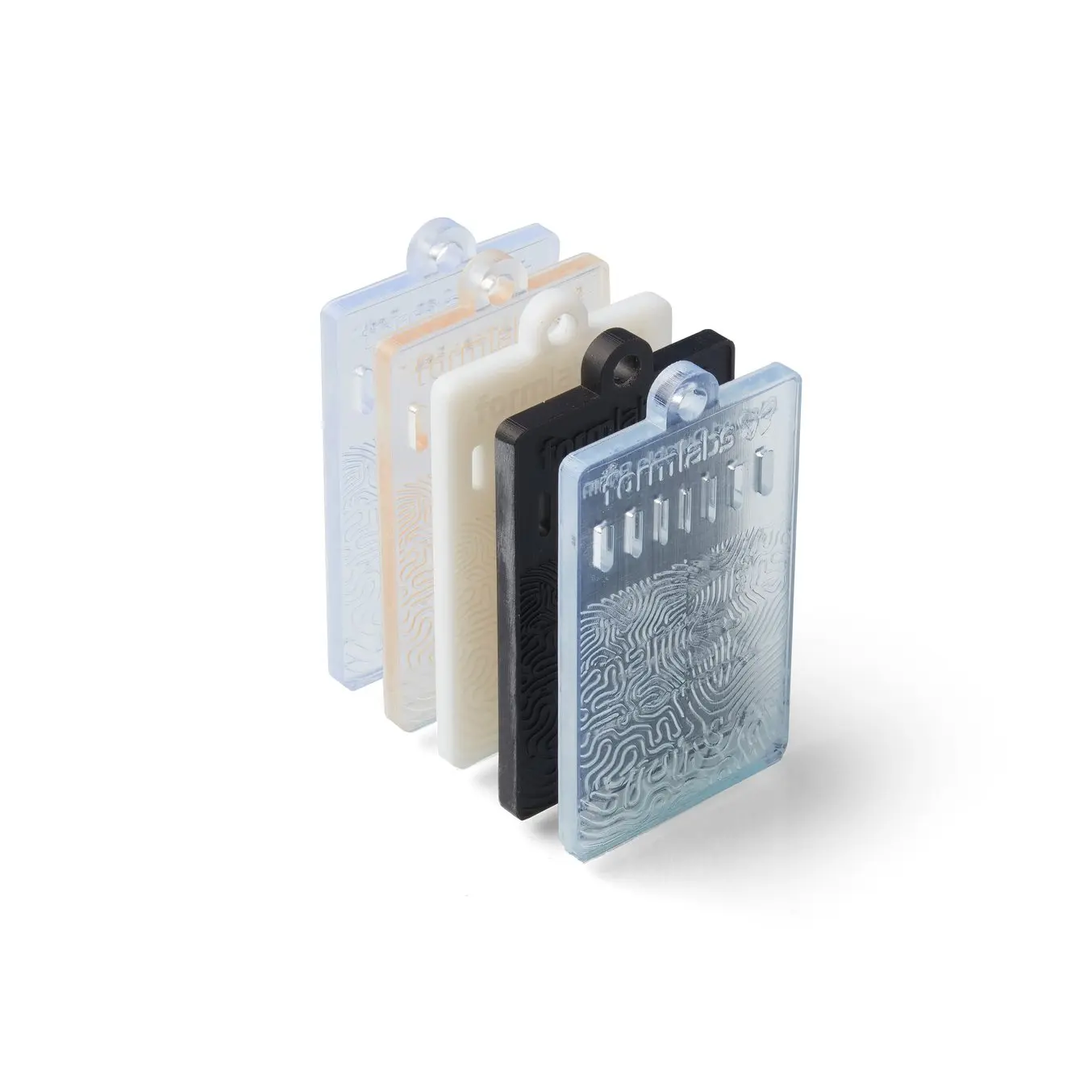
BioMed Resin Swatches
Each BioMed Resin swatch features embossed and debossed designs, 0.5-2.0 mm cutout thicknesses, as well as regulatory information unique to that resin.
Tuneable Material Settings With PreForm Print Settings Editor
Print setup on printers with OMM is still done with PreForm, Formlabs’ free print preparation software. The nuanced settings within PreForm enable the development of specialized profiles for custom resins and the ability for users to dial in precise print parameters.
“We really like how there are so many options for putting energy dosing into the different parts of the print. You can have the outside cured differently than the inside, and the support structure can be cured differently. This is really advantageous for us.”
Aaron Vaughn, Manager of Material Science and Technology, Poly-Med

The Print Settings Editor empowers PreForm users with nuanced controls. OMM is not required to use Print Settings Editor — it’s part of free PreForm software.
A complete list of print setting parameters is available here. For more information about printing with OMM, read our support article.
Open Material Mode and Form 4B at restor3d
restor3d is on a mission to expand the reach of personalized musculoskeletal care. The company has pursued this approach driven by additive manufacturing as 3D printing allows for a customized, tailored approach to producing medical devices.
With OMM, the team can leverage Form 4B’s best-in-class hardware and features to save time and produce more consistent results. Perry Derenoncourt, Additive Manufacturing Technician, assesses the Form 4B’s compatibility with running several of restor3d’s proprietary resins and has found the use of OMM to be pivotal in this development. Derenoncourt says, “the mixer arm is incredibly important for us. Our [resin] additive settles if the tank isn’t being actively mixed.” Being able to control mixing settings, such as wipe speed and behavior, for a variety of viscosities ensures every layer has the correct amount of additive. Elena Tercheria, Additive Manufacturing Manager, adds that the resin mixing feature, plus the reduction in maintenance required by Form 4B, is what is pushing their use of Form 4B with OMM over other resin 3D printers.
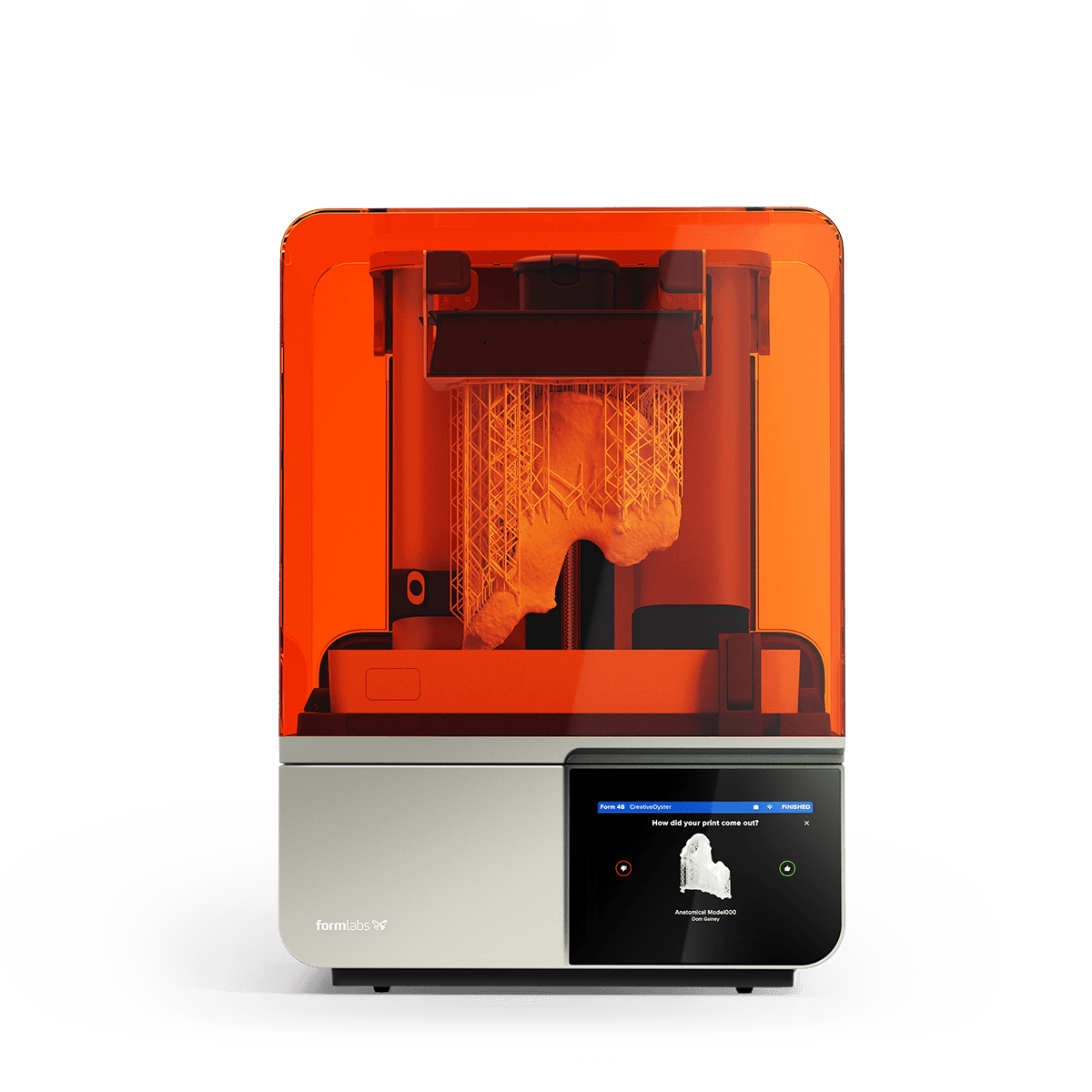
Introducing Form 4B: Faster Production, Higher Precision, Regulatory Equivalence
The Formlabs Healthcare team showcases our newest product, Form 4B. Along with a technical overview, Bradley Heil, Quality and Regulatory Lead at Formlabs, will discuss the regulatory aspects of producing medical devices with the help of Formlabs 3D printers.
Reaching Full Potential With Print Settings Editor
“Settings Editor definitely opens up a lot. It allows us to reach the printer's full potential.”
Perry Derenoncourt, Additive Manufacturing Technician, restor3d
While trial and error are required to dial in the optimal settings, the PreForm Print Settings Editor puts nuanced control in Derenoncourt’s hands, enabling him to pinpoint the precise settings required for his materials, and the specific accuracy requirements of the custom devices he’s printing.
“The UI is pretty intuitive and, though there are several different dials to turn, the Editor provides good explanations to guide you through it. Overall, there's a shorter learning curve for getting to a usable parameter file for a new resin,” says Derenoncourt.
Tercheria adds, “If R&D is interested in the capability of a new material for a specific application that we're wanting to explore, having open material settings allows us to vet it out and see if it's something that we can consistently replicate in a production setting.”
Ultimately, OMM has made Derenoncourt’s job easier and saved time, all while also expanding his ability to dial in settings more precisely.
Formlabs' Open Ecosystem Propels Research
Vaughn says, “More open printers will increase the material research that's out there, and there will be an increased amount of papers.” Access to information fuels further research, breakthroughs, and, ultimately, the development of future medical devices.
Formlabs is dedicated to providing the tools researchers and expert users need to push the boundaries of what it’s possible to print. With the open ecosystem enabled by OMM, researchers and expert users can now leverage the technological advancements of Formlabs SLA 3D printers while developing and printing custom resins.
Users printing their own biocompatible materials in Open Material Mode are responsible for validating biocompatibility. For more information on biocompatibility, our regulatory affairs and quality assurance team is here to help.
To start printing with any 405 nm photopolymer resin on the market as well as custom resins, purchase OMM. To explore Formlabs 3D printing solutions or learn more about OMM, contact sales.


